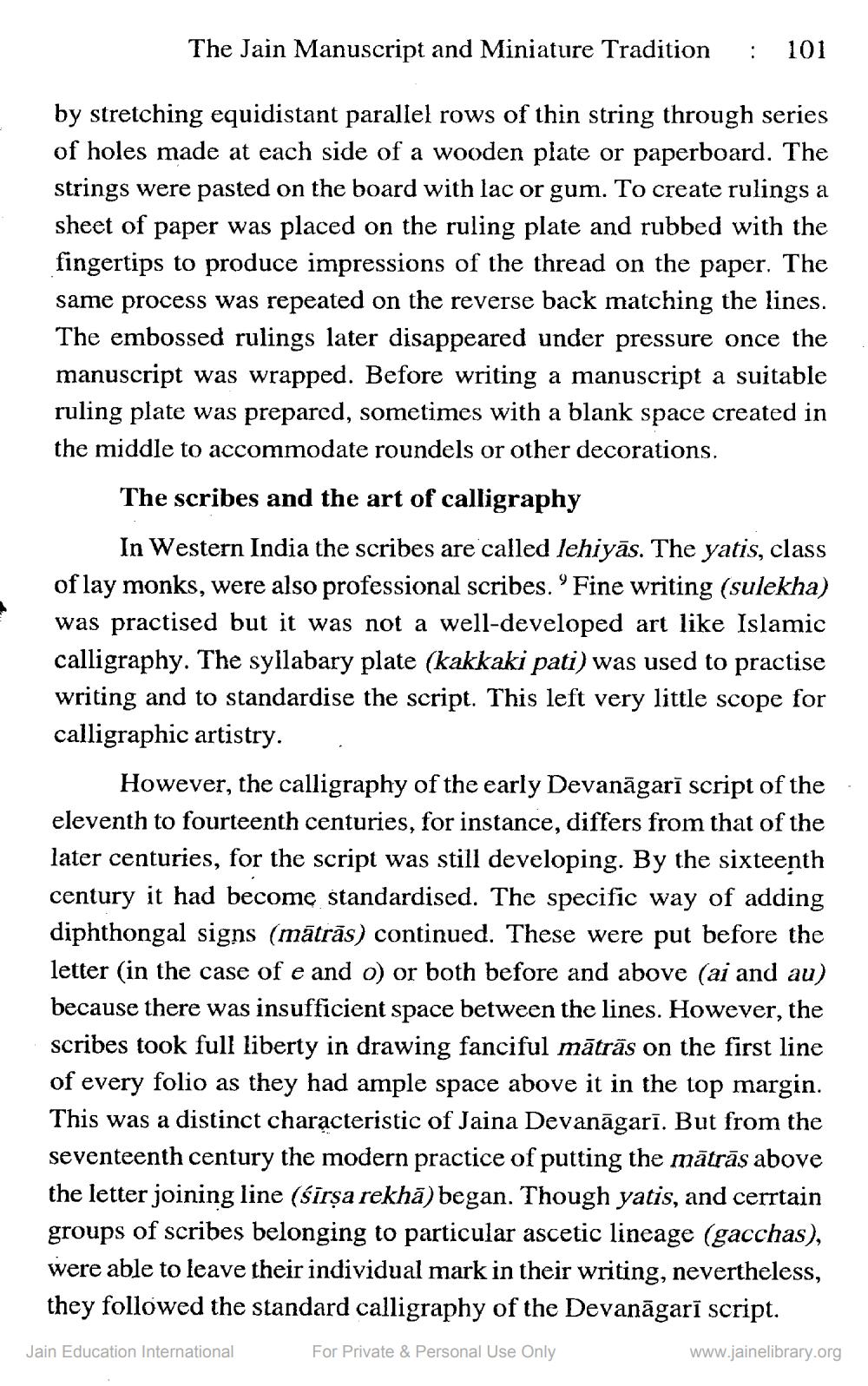________________
The Jain Manuscript and Miniature Tradition
: 101
by stretching equidistant parallel rows of thin string through series of holes made at each side of a wooden plate or paperboard. The strings were pasted on the board with lac or gum. To create rulings a sheet of paper was placed on the ruling plate and rubbed with the fingertips to produce impressions of the thread on the paper. The same process was repeated on the reverse back matching the lines. The embossed rulings later disappeared under pressure once the manuscript was wrapped. Before writing a manuscript a suitable ruling plate was prepared, sometimes with a blank space created in the middle to accommodate roundels or other decorations.
The scribes and the art of calligraphy
In Western India the scribes are called lehiyās. The yatis, class of lay monks, were also professional scribes. 'Fine writing (sulekha) was practised but it was not a well-developed art like Islamic calligraphy. The syllabary plate (kakkaki pati) was used to practise writing and to standardise the script. This left very little scope for calligraphic artistry. .
However, the calligraphy of the early Devanāgarī script of the eleventh to fourteenth centuries, for instance, differs from that of the later centuries, for the script was still developing. By the sixteenth century it had become standardised. The specific way of adding diphthongal signs (mātrās) continued. These were put before the letter in the case of e and o) or both before and above (ai and au) because there was insufficient space between the lines. However, the scribes took full liberty in drawing fanciful mātrās on the first line of every folio as they had ample space above it in the top margin. This was a distinct characteristic of Jaina Devanāgarī. But from the seventeenth century the modern practice of putting the mātrās above the letter joining line (sirşa rekhā) began. Though yatis, and certain groups of scribes belonging to particular ascetic lineage (gacchas), were able to leave their individual mark in their writing, nevertheless, they followed the standard calligraphy of the Devanāgarī script.
Jain Education International
For Private & Personal Use Only
www.jainelibrary.org




